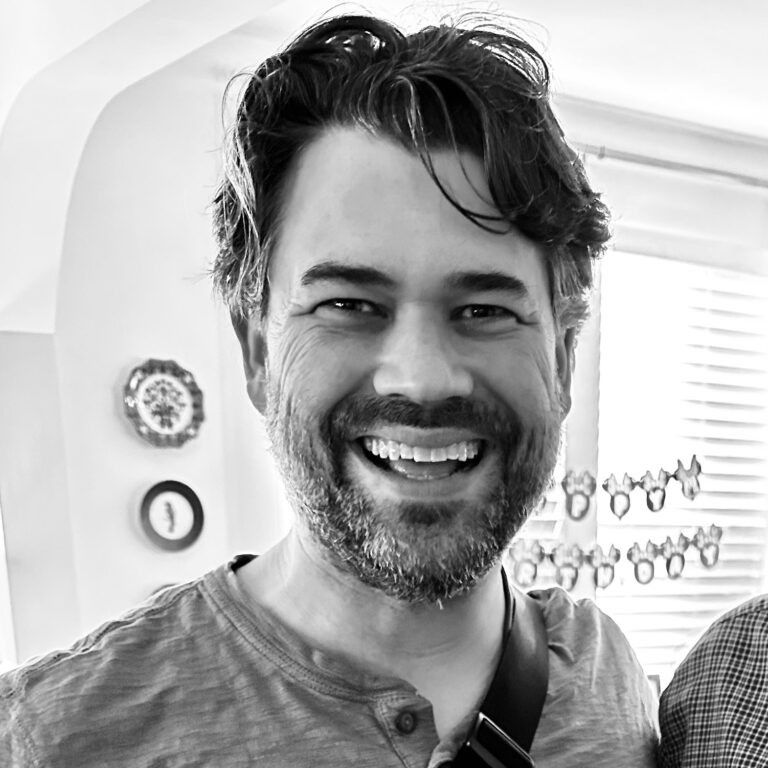An Interview with Ian Fieggen
An Interview with Ian Fieggen (a.k.a. Professor Shoelace) an expert on tying laces & knots.

Who are you, and what do you do?
G'day, I'm Ian Fieggen, better known as "Professor Shoelace". I've spent the past couple of decades compiling an unexpectedly large amount of information about shoelaces – particularly how to lace them and tie them – and presenting it in an informative and hopefully entertaining manner via various means, including printed handouts, bulletin boards, my website, book, videos, social media and smartphone apps.
What software, hardware, and other gear do you use?
As someone who literally lives on a shoestring, I rely on a bunch of old tools that still do the job. I only recently retired my 20-year-old PC that was running Windows XP, upgrading to a 10-year-old PC running Windows 8 (which I inherited from my Dad). This allows me to continue running most of my old graphics software, such as an ancient copy of Adobe Suite (circa 2000) that cost me well over a thousand bucks. I think I've just about got my money's worth out of that investment!
Besides the tools, what routines or habits help you get your work done?
Creating clear illustrations of shoe lacing methods or shoelace knots is harder than it first seems! Over the years, I've created a whole library of source images plus a collection of saved shortcuts ("actions") as well as memorized procedures for the whole workflow. I've even written my own custom software for converting and/or optimizing images.
In theory, all of this means that I can now produce images many times more quickly and easily than I could decades ago. In practice, I'm probably slower today because expectations have increased ten-fold. Twenty years ago, I'd create a single image for my website. Done! Today, a single image needs to be output in multiple resolutions to suit my website, social media sites, three versions of Android app, two versions of iOS app, etc.
What's so interesting about shoelaces – or knots in general?
Shoelaces are the ultimate underdog, aren't they? They're the butt of countless jokes in movies and TV shows. They're perceived as the most trivial of all items. They're seen as a nuisance, difficult to tie, not holding tight, coming undone or breaking at inopportune moments. They get traipsed through mud and muck, stepped on, chewed up, tangled, won't come undone. You'd think that we'd hate them, right?
And yet, for all their frustrations, shoelaces are still one of the best ways to secure a shoe onto our feet. And over the centuries, countless people have come up with countless little tips to solve these countless frustrations. And others – myself included – take things up a notch, mostly to improve something in their particular field.
For example, folks who regularly go hiking developed better ways to lace their hiking boots, while runners developed lacing methods better suited to running shoes. Folks who are limited to only one hand developed ways to lace or tie one-handed, while folks who are very adept with both hands developed faster, more intricate or more secure ways to lace or tie.
And in my case, I was trying to find a symmetrical way to tie a shoelace – and in the process discovered that it was also faster. Once I put my "Ian Knot" on my website, it spawned a whole bunch of people to pass on their tips, which slowly saw the website develop as the place to disseminate this type of information.
Beside the Ian knot, what's your favorite knot?
My latest favourite is also my latest creation. It has the identical security to my "Ian's Secure Knot" but is tied with a modified (and somewhat slower) variation of my "Ian Knot". I'm still working on improving the technique and speed before releasing it to the world.
In fact, I find this aspect of any knot fascinating. Often, there are already multiple techniques for the identical finished knot, and the "standard" technique may not necessarily be the best/fastest/easiest. I love experimenting to see what improvements I can come up with.
The Shoelace Site has been up & running since April 2000. The web's changed a lot in the past couple of decades. What changes stand out to you?
Probably the biggest change has been the emergence of social media. My website pre-dates just about every social media website that we take for granted today. Back in the late 1990s / early 2000s, people searched for and shared stuff on the Internet. Today, people search for and share stuff on their preferred social media platform.
What that meant back then was that I was late to the party on many platforms, as each slowly emerged and gained prominence. What that means today is that I need to divert time away from my core platform (my website) to ensure that I also have a presence where people actually spend time on their preferred platform(s). As a result, I'm now spreading myself way too thin to find time to actually add much content.
It takes effort to keep any project running for so long. How do you keep it interesting?
I'm not sure that I am still keeping it interesting! My additions are now few and far between. I still have a ton of pending additions, but real life keeps getting in the way.
Luckily, it seems that folks still find the website useful as it stands. I frequently receive e-mails from people telling me that they visit every time they get new shoes. And my website frequently gets hammered following a prominent mention on discussion forums like Reddit. It's encouraging to see that it's still well liked and respected.
Do you have a favorite shoelace? And a favorite pair of shoes?
Wow, I now know how a parent feels when they're asked to pick their favourite child! I've collected so many interesting shoelaces over the years that it's hard to choose just one. Here's three, each of which is special for a different reason:
A pair of flat "Zillion" shoelaces from Japan, double-layer stitched material with a colourful pattern taken from a traditional Japanese Kimono. The shoelaces are wrapped into a flat spiral, then packaged in a flat square wooden box. These were just too gorgeous that I've kept them "mint in wooden box".
A pair of hand-woven shoelaces custom made on an "Inkle Loom" by a lady in California, USA, given as a "Thank you" gift in appreciation for my Shoelace Site helping her with home-made aglets and length formulas.
Finally, a favourite that I'm actually using: A pair of "Snobby" shoelaces from Latvia, round, in several shades of blue. Snobby uses a knitting process instead of the more usual weaving process, which allows multiple colors to run the length of the shoelace, plus gives the shoelaces slightly better elasticity (for comfort).
As for my favourite pair of shoes – that's an easy decision: A pair of "Converse All Star Shoelace Uppers". As the name suggests, the uppers are actually made out of shoelaces! Six different coloured flat shoelaces are woven together to form the "material".
These sneakers can be seen on my website in the photo gallery for "Waffle Lacing", and very occasionally can be seen on my feet when I attend a public event as "Professor Shoelace": https://www.fieggen.com/shoelace/waffle-lacing.htm#gallery
How has the web gotten better over the years? And how has it gotten worse?
The biggest improvement I've seen is that bandwidth and cost are no longer an issue. For the first decade at least, it was a challenge to make my website lean enough that it would work on simple computers, that it wouldn't cost visitors too much in downloads nor cost me too much for website hosting, and that it could survive a sudden jump in traffic without crashing the server.
Thanks to today's faster, cheaper Internet, I've been slowly updating everything on my website to higher resolution. That means re-doing thousands of images – but the results are definitely worth it.
I'm also liking the way that a single web page can include "responsive" code so that it can be viewed on a multitude of different devices with different screen sizes and orientations. It took a lot of work to get it to this stage – but it's a pretty cool outcome.
On the downside, there seems to have been a fundamental shift in the way people are sharing stuff nowadays. Twenty-odd years ago, if someone found a worthwhile web page or website (like mine), they'd send the link to others via e-mail, discussion forums or even on their own web page or website.
Today, when people find something worthwhile, they'll often make their own post or video in the hopes that they will "go viral". Naturally, never with any credit to the original website or video that they copied.
In a similar vein, we've recently seen the introduction of ChatGPT and other AI engines. I see this as a bad thing.
For decades, web publishers like me have had a comfortable relationship with search engines. We publish stuff, search engines help people to find that stuff – everyone wins.
If these search engines instead switch to using an AI engine to "re-phrase" what they find, creating their "own" derivative content, not linking to the sources – nor even giving any credit – my website (and countless others) will slowly become pointless. What we publish simply becomes fodder for those AI sites, while the dwindling number of visitors to the actual websites will mean ever dwindling income and ever more publishers giving up and shutting them down.
You started programming in the 1980s. PCs had already been introduced and were becoming more commonplace. You described the time as "incredibly interesting and thoroughly rewarding". Has it sufficiently sustained your interest all these years? Has anything rivaled it?
I'm someone who is constantly tinkering and experimenting with computers. I still regularly find new challenges and develop new solutions.
My problem is that I'm incredibly interested in just about everything. The world keeps finding new ways to surprise me. In computers alone, two developments spring to mind:
- Arduino and Raspberry Pi brought computing to a miniature level, allowing people to make their own computer-powered devices.
- 3D printing allowed people to make their own real-world stuff.
Sadly, those two are also examples of things that fascinated me – but for which I never found the time.
I enjoyed reading Ian's Rant 07 – Music Industry vs. The Internet – one of just 12 rants published over 24 years. This one was published in August 2003 and the music industry has changed a lot since then. A lot more people are creating music now, but most music is streamed. While convenient, do you think it's an overall positive move vs. owning a CD & being able to rip it?
I'm so out of touch with the music scene today. Of course it makes sense for people to stream rather than buy outright. But personally, if I heard anything that I particularly liked on the radio today, I'd probably still want to buy a CD. I'm of the old school who believes in real-life, tangible stuff.
The world today is a strange blend of real-world and digital – not just music. I still have photo albums from my early days. When digital cameras first emerged, there was a period during which I'd still make prints for the albums. Eventually I went fully digital – and now prefer it. I'm even thinking of digitising all my old photos.
So what happens when the next generation inherits the current generation's belongings? Will all that real-world stuff – like photos and CDs – be discarded because younger people find them too bulky and troublesome? And how will we merge our ancestor's digital belongings with our own? And will some of those digital belongings disappear along with our ancestor's expired digital certificates? It's all very weird.
How do you relax or take a break?
Considering that most of my day is spent indoors and on-line, my preferred relaxation is outdoors and in the real world. Gardening, walking, swimming or driving (preferably to other places where we can walk or swim).
Whose work inspires or motivates you, or that you admire?
I can't help but admire Elon Musk, who took the idea of pushing the envelope to inconceivable levels – and earned himself billions in the process.
I also can't help but admire Fred Hollows, who devoted his skills to restoring eyesight to the poor – for little to no personal enrichment.
Anything else you'd like to add?
I never like to miss the opportunity to spread the word about the "Granny Knot". This is probably the most common reason that people's shoelace bows sit crooked or their shoelaces come loose. Potentially half the world's population is tying their shoes incorrectly!
The solution is super-simple – and the word is slowly spreading. But if anyone out there is frustrated by their shoelaces and hasn't yet found the answer, do yourself a favour and search for info on the "Granny Knot", either via my website or wherever else you search for knowledge nowadays.
This is more of a bonus question (that I'd be happy to leave off for privacy reasons). I saw you also keep a family tree that extends to the 1600s. Are there any amusing finds or anecdotes you'd be willing to share as you were creating it?
Sadly, I can't think of anything worth adding, Raj! My older sister did a lot of the family tree research, mostly by visiting the actual boring, dusty archives throughout Europe, then later via the Internet. These don't really contain the personal stories that breathe life into history. So – no real answer to this question.




